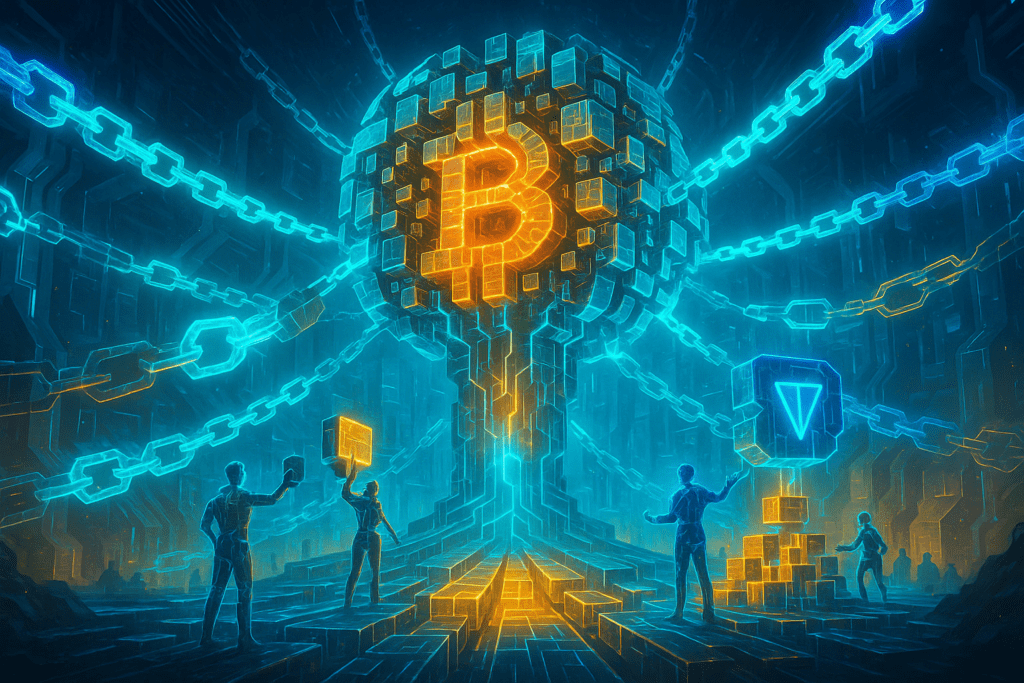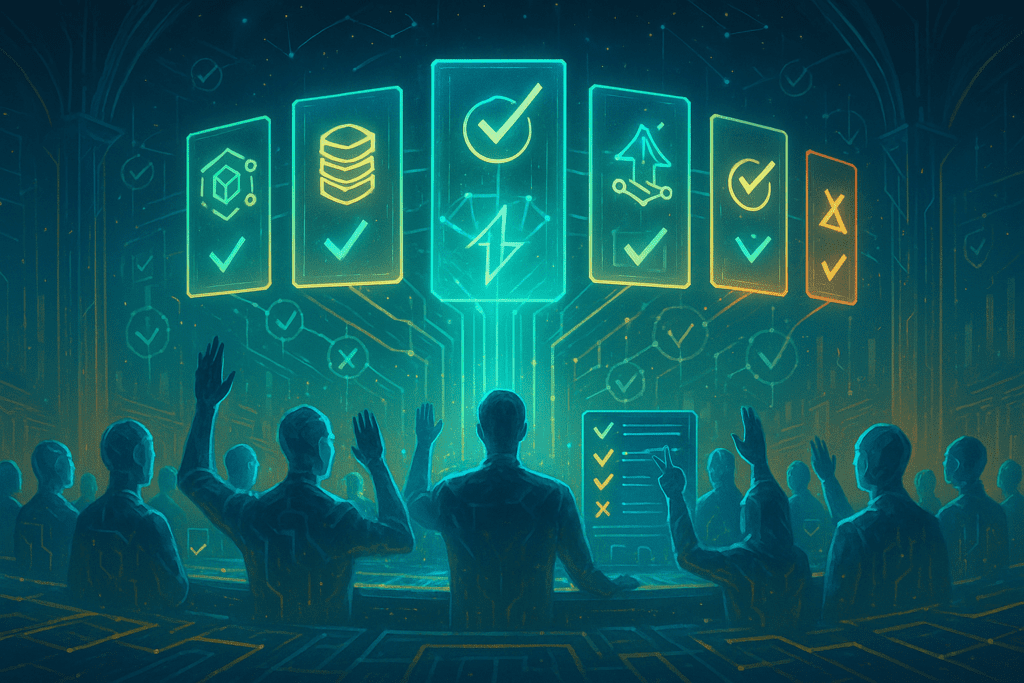Learn how blockchain updates work: what soft forks and hard forks are, why they happen, and how they shape the future of crypto.
📘 Table of Contents
- Introduction: Why Blockchain Needs Updates
- What Is a Blockchain Update?
- Soft Forks: Gentle, Backward-Compatible Upgrades
- Hard Forks: A Full Network Split
- Why Forks Happen: Main Reasons for Upgrades
- How Developers and the Community Decide to Fork
- Famous Forks in Crypto History
- Forecast: The Future of Blockchain Upgrades
- Conclusion: Understanding Forks = Understanding the Future
Online advertising service 1lx.online
Introduction: Why Blockchain Needs Updates
Blockchain is powerful, but not perfect. Every popular network — from Bitcoin to Ethereum and beyond — evolves over time.
To stay secure, scalable, and useful, blockchains require updates.
This guide explains on the topic of the article how soft forks and hard forks shape the future of blockchain technology, why they happen, and how they impact users.
“A blockchain that never updates eventually becomes a blockchain nobody uses.”
What Is a Blockchain Update?
A blockchain update is a change to the network’s rules, code, or structure.
Unlike regular software, blockchain cannot update silently — thousands of nodes around the world must agree on new rules.
This creates a unique challenge because blockchains are:
- decentralized,
- transparent,
- consensus-based.
When rules change, all participants must decide whether to accept the new version or continue running the old one.
This decision is what creates soft forks and hard forks.
Online advertising service 1lx.online

Soft Forks: Gentle, Backward-Compatible Upgrades
A soft fork introduces new rules without breaking old ones.
Nodes that do not upgrade can still operate — they remain compatible with the updated network.
Key Features of Soft Forks
Online advertising service 1lx.online
- Backward-compatible
- Do not split the blockchain
- Usually require majority miner/node support
- Safer for users and developers
Example: Bitcoin’s SegWit
SegWit changed how BTC transactions are structured.
Old nodes still worked, but upgraded nodes enjoyed lower fees and more efficient blocks.
Soft forks are ideal when changes are minor or incremental, keeping the community together.
“Soft forks evolve a blockchain — they don’t divide it.”
Hard Forks: A Full Network Split
A hard fork introduces rules that are not compatible with previous versions.
Nodes that do not upgrade can no longer interact with the new chain.
This creates two outcomes:
1. A mandatory upgrade
Everyone must update software to continue using the network.
2. A blockchain split
If the community disagrees, the chain divides into:
- the old version
- the new version
Famous Examples
- Bitcoin → Bitcoin Cash (block size disagreement)
- Ethereum → Ethereum Classic (DAO hack response)
Hard forks can be planned upgrades — or community conflicts.
“Hard forks don’t just update technology — they reveal how united the community truly is.”

Why Forks Happen: Main Reasons for Upgrades
Forks are not random — they occur for critical reasons.
1. Security Improvements
Fixing vulnerabilities or adding stronger encryption.
2. Scaling the Network
Improving transaction speed, fees, or block size.
3. Adding New Features
Smart contracts, NFTs, governance tools, etc.
4. Reversing Hacks or Exploits
Like the Ethereum DAO recovery fork.
5. Community Disagreements
Different visions for how the blockchain should evolve.
Forks shape the identity, purpose, and direction of every major blockchain.
How Developers and the Community Decide to Fork
Forks require coordination and consensus, involving:
- developers,
- miners/validators,
- exchanges,
- wallet providers,
- users.
Decision-Making Process
- Proposal is created (BIP for Bitcoin, EIP for Ethereum).
- Developers discuss and refine technical changes.
- Node operators vote through signaling mechanisms.
- Final version is released.
- Community decides whether to upgrade.
Forks prove that blockchain governance is both technical and social.

Famous Forks in Crypto History
Here are the most influential forks that shaped the industry:
Bitcoin Cash (2017)
A disagreement about Bitcoin’s block size led to BCH breaking away.
Ethereum Classic (2016)
The DAO exploit forced Ethereum to choose:
- fix the blockchain (ETH),
- or leave the hack untouched (ETC).
Monero’s Regular Hard Forks
Monero uses predictable forks to maintain privacy and ASIC resistance.
Cardano Era Upgrades
Instead of chaotic forks, Cardano uses a structured roadmap (Shelley, Goguen, Basho).
Each fork changed the direction of crypto history — showing how governance decisions shape innovation.
Forecast: The Future of Blockchain Upgrades
By 2030, forks will evolve dramatically thanks to AI, automation, and multi-chain coordination.
Expected Trends
- AI-audited code upgrades
- Forkless blockchains using zero-knowledge proofs
- Decentralized governance voting systems (DAOs)
- Seamless user migration tools
- Cross-chain upgrade compatibility
Future blockchains may update like modern software — instantly and safely — without splitting.
Conclusion: Understanding Forks = Understanding the Future
Forks show how blockchains grow, improve, and sometimes struggle.
For beginners on the topic of the article, understanding soft forks and hard forks is essential to understanding decentralization, governance, and the evolution of crypto.
“Every fork tells a story — of innovation, disagreement, or rebirth.”
Our creator. creates amazing NFT collections!
Support the editors - Bitcoin_Man (ETH) / Bitcoin_Man (TON)
Pi Network (Guide)is a new digital currency developed by Stanford PhDs with over 55 million participants worldwide. To get your Pi, follow this link https://minepi.com/Tsybko and use my username (Tsybko) as the invite code.
Binance: Use this link to sign up and get $100 free and 10% off your first months Binance Futures fees (Terms and Conditions).
Bitget: Use this link Use the Rewards Center and win up to 5027 USDT!(Review)
Bybit: Use this link (all possible discounts on commissions and bonuses up to $30,030 included) If you register through the application, then at the time of registration simply enter in the reference: WB8XZ4 - (manual)
